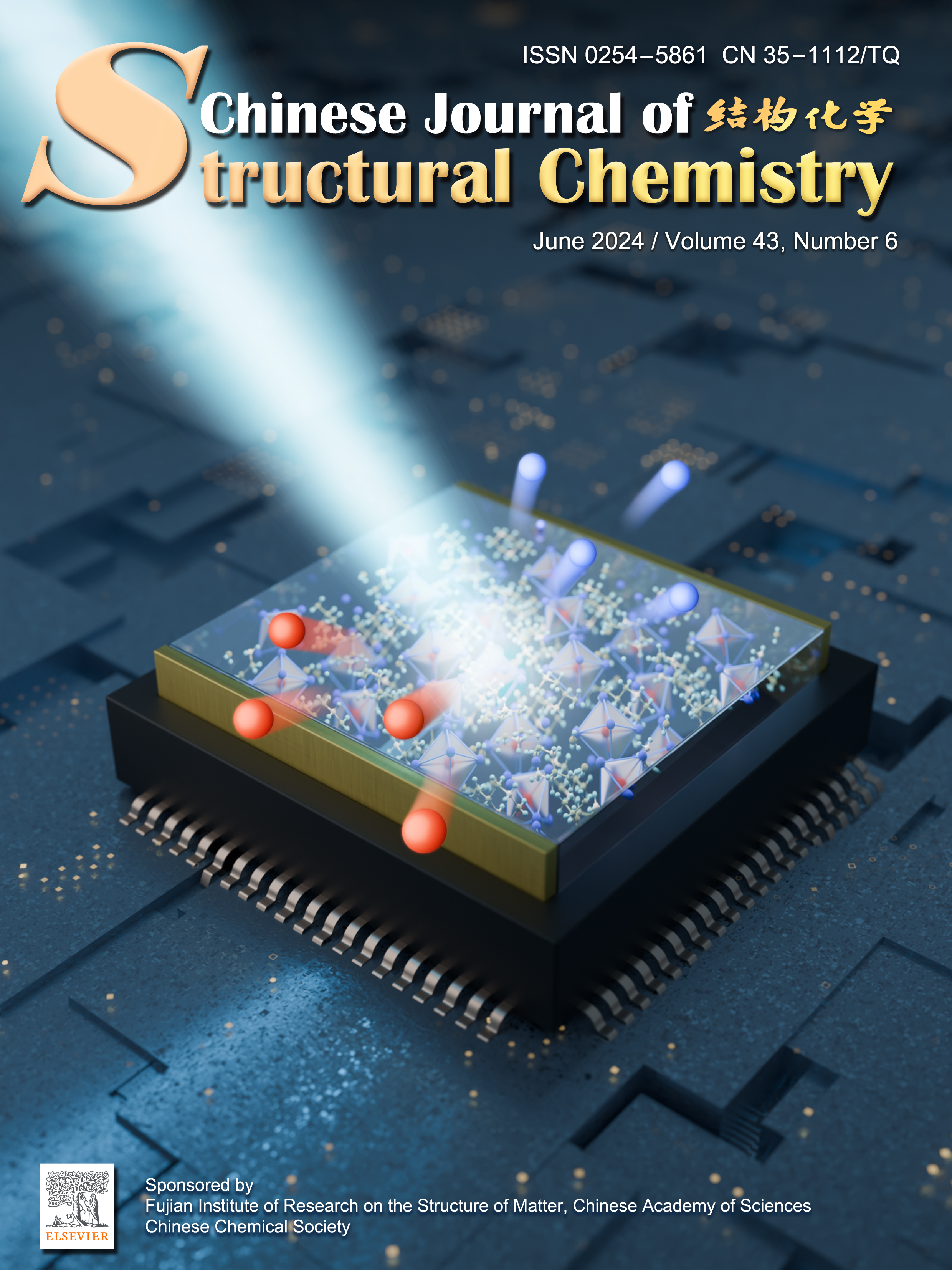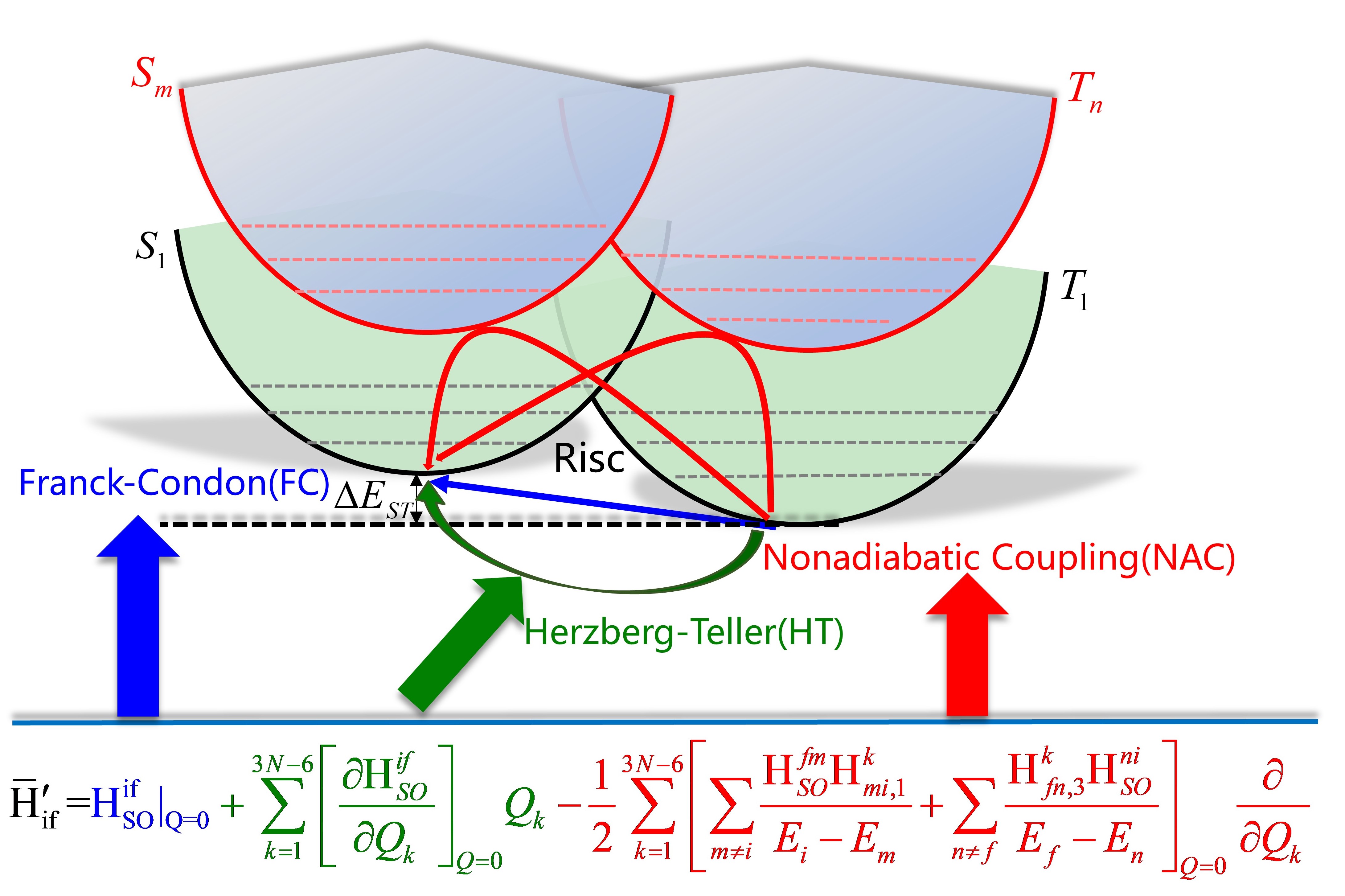
Xin Dong, Tianqi Chen, Jing Liang, Lei Wang, Huajie Wu, Zhijin Xu, Junhua Luo, Lina Li*
Xin Huang, Yi Zhao*, Wanzhen Liang*
Chin. J. Struct. Chem., 2024, 43: 100278. DOI: 10.1016/j.cjsc.2024.100278
June 15, 2024
ABSTRACT
In this work, we have quantitatively simulated ISC rates and revealed the contributions from FC, HTVC and SVC effects for three types of TADF emitters. It is found that the impact of vibronic coupling varies among different molecular systems. For those with a significant local excitation, the direct ISC channel from FC contribution is unfavorable due to the large singlet-triplet energy gap. As such, the vibronic coupling effects can be substantial as reflected in the large HTVC and SVC terms. For the others having spatially separated HOMO and LUMO orbitals with an obvious CT excitation character, the singlet-triplet energy gap is usually small, and the FC term is thought to dominate the rate. However, even in this case, the HTVC and SVC cannot be neglected especially for the molecules with close alignment of Sn and Tn state energy levels. For instance, the SVC contribution to RISC rate for PTZ-DBTO2 can get to 32.6%. Finally, we have analyzed specific proportions of the contribution of different vibration modes to SVC, and it is reasonably inferred that the magnitude of SVC values can be controlled by shaping specific vibration modes, providing valuable insights for guiding molecular design strategies.






